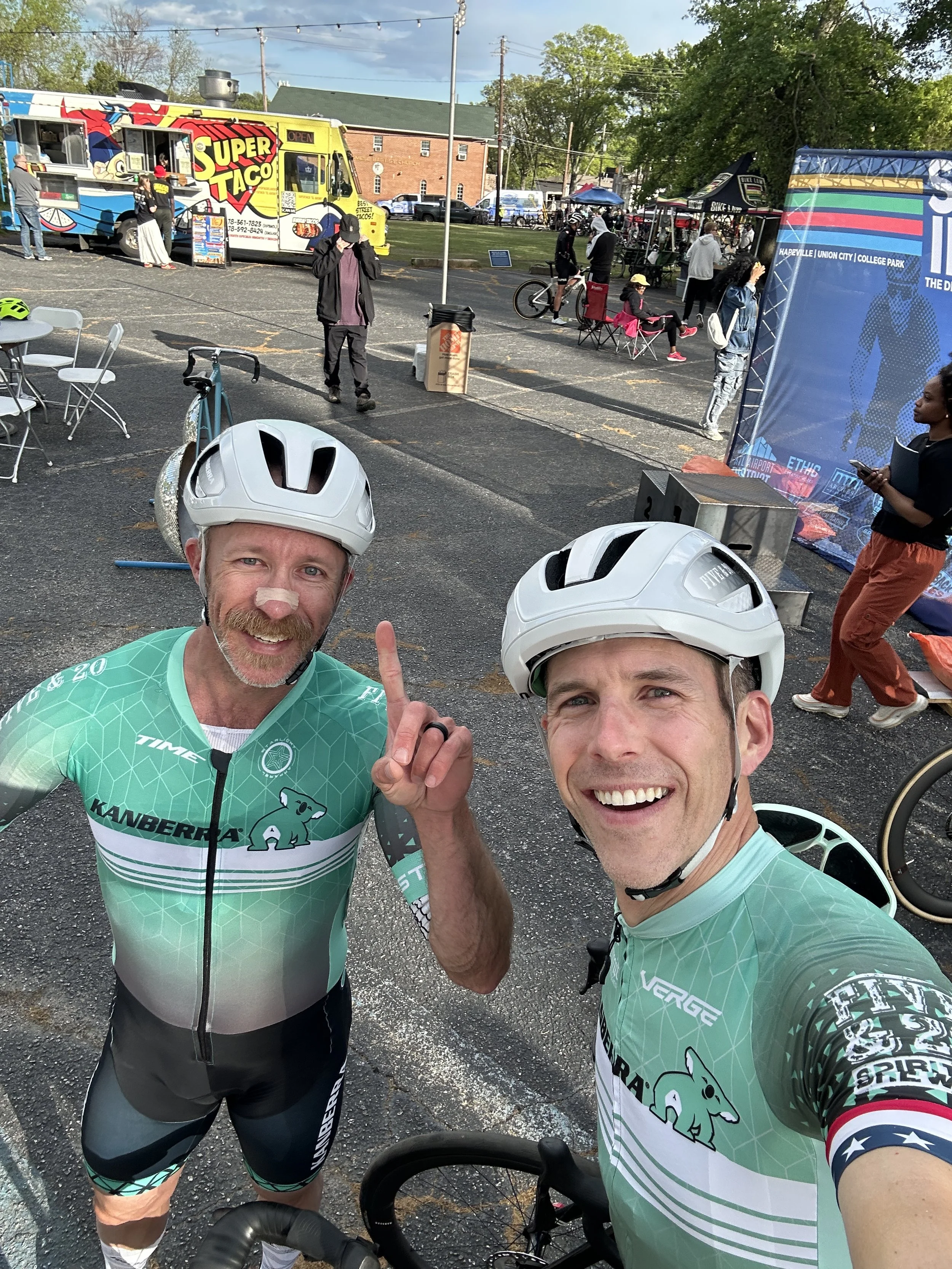Performance Tips Volume 2
STOP TREATING EVERY INTERVAL SESSION LIKE A PERFORMANCE TEST
One of my athletes dropped this gem after crushing his VO2 workout: "I kept trying to remind myself to trust the process and that every workout is not a performance test."
Think about that. How many times have you approached a hard interval day with that knot in your stomach? "Will I hit my numbers? What if I crack on the third interval? What kind of day is this going to be?"
Even after 15 years of doing this, I still get those thoughts before a big VO2 session. But here's the shift that changes everything – treat those hard days like going to work.
Most jobs have challenging days, right? Big presentation, important meeting, whatever. At some point, you normalize that stress and develop coping mechanisms. You need to apply those same strategies to your hard training days.
Make your pre-workout routine second nature:
Nail your nutrition
Prioritize sleep
Dial in hydration
Have your kit ready
When all that's dialed, you can focus on simply showing up and giving your best. It's not a test – it's just another day at the office.
This mindset shift helped my athlete accumulate some of his best quality VO2 work in a year. Not because he suddenly got fitter, but because he stopped psyching himself out.
Trust the process, but also understand why these sessions matter. When you grasp that it's not a test but a stimulus to develop your top-end aerobic power, the pressure lifts and performance follows.
COMMIT TO YOUR RACE MOVES
I recently got this race report from an athlete: "Got the win. I went off the front a little over halfway through the 30-minute race expecting someone would go with me or that I would get caught."
Two completely different scenarios, right? Either someone bridges up, or he gets swallowed by the pack. But neither happened because he did the one thing many racers fail to do: he committed fully to his move.
"I put my head down, took the fastest lines through the corners and pushed as hard as I could without blowing up. I averaged just over 290 watts for 14 minutes."
Game over. Victory secured.
Here's the thing – you just burned a massive match getting away. Don't waste it by second-guessing or constantly looking over your shoulder. Too many riders attack and then ride tempo, watching the pack reel them in. Once you've made your move, COMMIT.
Key tactics when you're solo:
Push to stay out of sight (psychologically crushing for chasers)
If you're still ahead with 2 laps to go, the chase has usually fizzled
Take the fastest lines – now is not the time for conservative cornering
Find that sweet spot where you're on the edge but sustainable
Remember, you're not metering your effort to pace perfectly to the line – you're trying to break their will to chase.
DON'T MAIL IT IN DURING THE WINTER-SPRING TRANSITION
I'm filming this in March, and I know winter is dragging for many of you. I've got athletes in Minnesota and Chicago still seeing snow while getting those occasional glimpses of outdoor riding.
This is exactly when motivation wavers. "Eh, not that big of a deal if I skip this one." And suddenly their 12-hour training week becomes 8 hours.
Is it the end of the world? No. And yes, training should be fun. But now is precisely when you should burn those mental matches. When you really don't want to get on the trainer, that's when doing that 2-hour ride delivers outsized benefits.
Remember: Going from 8 to 9 hours a week is a 12.5% increase in training volume. Going from 8 to 12 is a 33% jump. That's MASSIVE.
A quick note on progress: One of my Cat 1 athletes recently hit some PRs and asked if it was due to the threshold block we did 4 weeks ago. The answer is never that simple. Training is cumulative – a massive snowball effect. It's not just last month's work but:
The base miles from winter
The peaks from last season
The recovery periods between hard blocks
The proper progression and sequencing
Don't just read about proper periodization – implement it. There's a reason the base→build→race sequence exists. Don't get sucked into the "intensity vortex" (more on this in an upcoming podcast with Koby Pierce).
BONUS TIP: IT'S NOT ALWAYS ABOUT THE WATTS
Last quick hit: Two athletes in the same race with a 30-pound weight difference. The lighter guy put out 25 more watts on average and made the podium. The heavier guy got shelled halfway through.
Looking at their files, the difference wasn't fitness – it was race craft. The dropped rider was constantly in the wind, following the wrong moves, burning matches at the wrong times.
Remember: It's not who pedals the most, it's who pedals the hardest when it matters. Sometimes that's the first 10 minutes, sometimes it's the last 10.
I realized this personally back in 2012 racing the NRC calendar. My teammate John Hunter would consistently average 30 watts LESS than me at similar weights, yet perform better. Why? My cornering was wasting energy, and I was burning matches unnecessarily.
When I finally started placing in those crits, it wasn't because I got stronger – it was because I got smarter about conserving energy while still maintaining position.
WHAT'S NEXT?
This is a test run for a new format. Let me know if it's hitting the mark:
Are these tips useful?
What specific aspects of training or racing would you like me to cover?
Is this format (3 quick tips, 4-5 minute read) working for you?
Until next time – trust the process, commit to your moves, and don't mail it in just because there's still snow on the ground.
Keep pushing,
Brendan
P.S. If you found this valuable, forward it to your teammate who's always overthinking their interval workouts. Their mental game (and power numbers) will thank you.

